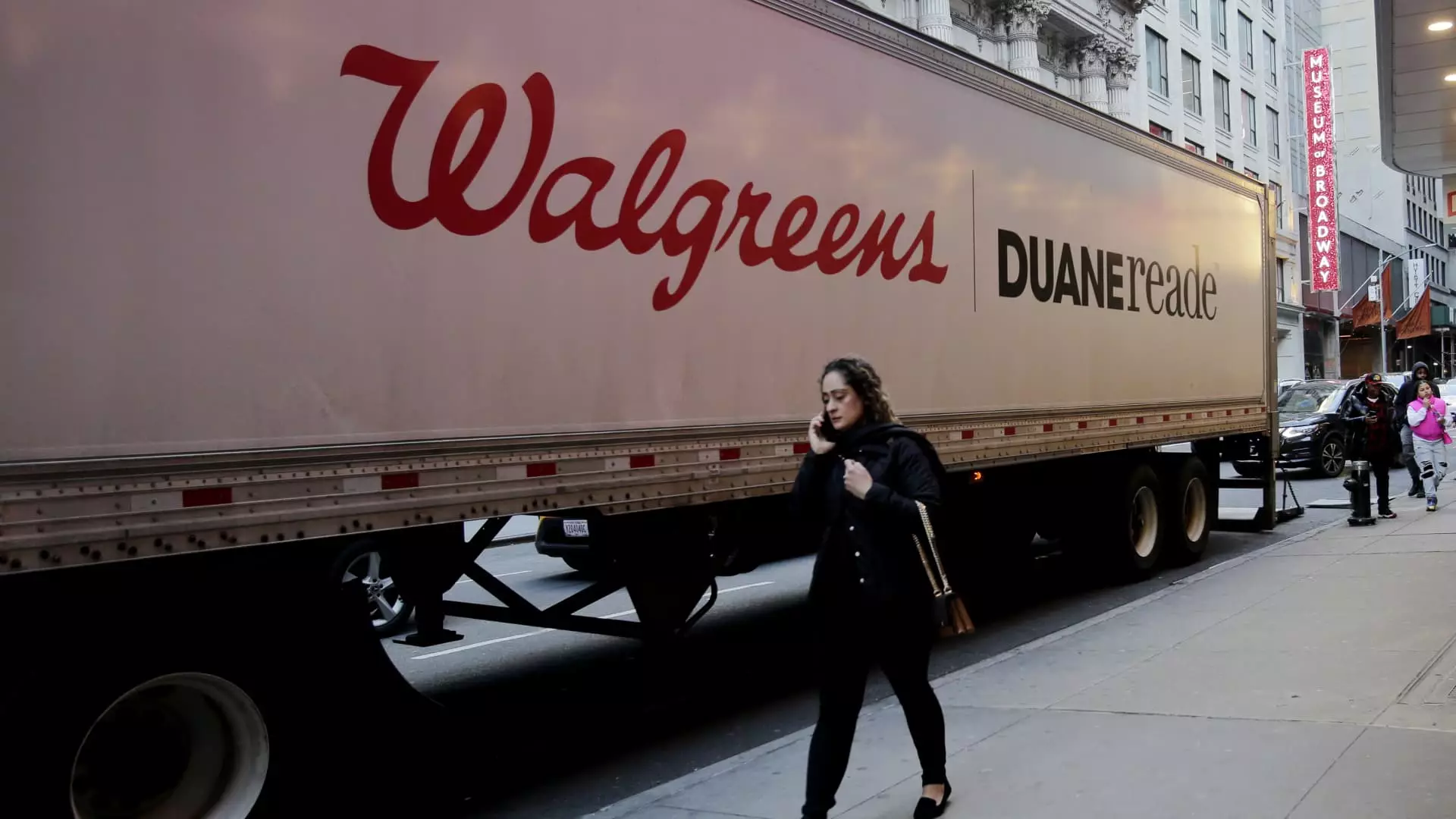Walgreens recently revealed its fiscal first-quarter results, which surprisingly exceeded market expectations in multiple areas. The company reported earnings per share of 51 cents, significantly higher than the anticipated 37 cents. On the revenue front, Walgreens generated $39.46 billion, outperforming analyst forecasts of $37.36 billion. Despite this promising data, the retail pharmacy giant maintained its earnings forecast for fiscal 2025 at $1.40 to $1.80 per share, refraining from offering any annual sales projections.
This strategic restraint comes amidst broader market uncertainties and an evolving retail landscape, with Walgreens aiming to stabilize its financial footing while navigating a tumultuous environment. The immediate positive response from the stock market—where shares surged by 27% following the announcement—illustrates the optimism investors have in the company’s potential recovery and long-term strategy.
Although the earnings report showcased some impressive numbers, it’s essential to recognize the underlying challenges Walgreens faces. The company recorded a net loss of $265 million—compared to a loss of $67 million a year earlier—indicating that while revenue may be climbing, operational efficiencies and financial stability remain elusive. This disparity predominantly stems from higher operational losses linked to its ongoing initiative to close struggling stores, with plans to shutter 1,200 outlets over the next three years, signaling a decisive move to optimize its retail footprint.
Moreover, CEO Tim Wentworth admitted that the transition towards stabilizing the U.S. retail pharmacy segment is imperative for the company’s long-term turnaround. This focus highlights Walgreens’ need to realign its operational strategies to react dynamically to changing consumer behaviors and competitive pressures.
With a retail pharmacy network encompassing around 8,500 locations across the United States, Walgreens’ decision to ramp up store closures represents a critical pivot aimed at enhancing profitability. The company plans to close 500 stores within the ongoing fiscal year alone, implying a concentrated effort to eliminate underperforming outlets that are dragging the overall business down.
In addition to physical store closures, Walgreens is also refining its labor management practices. A new scheduling model is set to be implemented in approximately 200 locations, aiming to improve the in-store experience by aligning employee shifts with customer demand. This new approach not only considers store-specific traffic patterns but also accommodates staff availability and preferences—potentially leading to increased employee engagement and customer satisfaction.
However, Wentworth cautioned that the overall retail business turnaround is further complicated by ongoing consumer pressure from inflation and rising interest rates. Many consumers are exhibiting value-seeking behavior, prompting a decline in discretionary spending across various categories.
Despite the challenges, Walgreens reported growth across its three main business segments. The U.S. retail pharmacy division posted $30.87 billion in sales, representing a 6.6% increase from the same time last year. Pharmacy sales, specifically, surged by 10.4%, driven mainly by inflation in brand medication prices.
However, contrasting this growth, retail sales took a hit, falling by 6.2% compared to the prior year. The dip in retail performance can be attributed to several factors, including a weaker-than-expected cough, cold, and flu season and reduced sales in non-essential product categories. This mixed performance highlights the dual nature of Walgreens’ business trajectory—growth in pharmacy services juxtaposed against struggles in traditional retail offerings.
Walgreens’ healthcare segment also saw a significant boost, with revenues soaring to $2.17 billion—more than 12% higher year-over-year. This growth can be partially credited to its partnerships with primary care provider VillageMD and specialty pharmacy Shields Health Solutions, illustrating the company’s strategic shift towards a more integrated healthcare model.
On an international scale, Walgreens reported a solid performance with sales from its overseas units, like the U.K.-based Boots pharmacy chain, increasing by 4.5%. Cross-border expansion offers essential diversification and revenue streams, which could temper some of the volatility seen in the U.S. market.
While Walgreens has demonstrated resilience with its recent earnings report, the company needs to sustain this momentum through strategic restructuring and better operational execution. The raised earnings expectations and ongoing transformation signal a cautious optimism. As Walgreens continues to adjust its strategies in light of evolving consumer behaviors and economic pressures, stakeholders will keenly watch whether the company can fully realize its turnaround strategies in the coming quarters.

